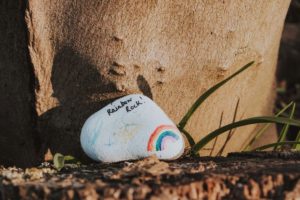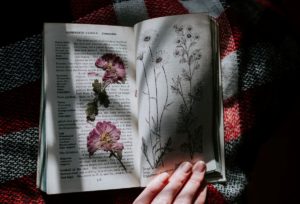One of the most challenging parts of chronic illness is free time. Firstly, for many of us, fatigue accompanies our HS. Lack of energy to do anything can be frustrating and not to mention boring. So why not take up a hobby.
Hobbies certainly don’t need to be exercise focused. There are many inexpensive and easy to learn hobbies you can do from home. Certainly one of the best parts of the internet is that you don’t need to leave your house to learn something new.
When your chronic illness flares up
Hobbies are good for you because they give you something to do rather than thinking. Thinking, in short, when you have a lot of time on your hands leads to stress. So a hobby can be beneficial. In addition, you’ll be learning something new. And that keeps your mind active.
From comforting crafts to fabulous flowers, here are ten hobbies you can do from your sofa.
1. Cross stitch

Embroidery has certainly enjoyed a sort revival as of late. It can be intricate and beautiful. However, it can seem quite intimidating. Above all embroidery styles, cross stitch is the easiest to learn. Cross stitch is one stitch in the shape of an X. And so, you follow a pattern to build up the Xs into a picture.
Firstly, cross stitch is done on a material called Aida. Aida is made up of squares with holes for the needle to go through. Patterns are widely available, for example you can easily find them online. Or you can buy books or individual patterns. Cross stitch is an easy and inexpensive way to learn embroidery. This is one hobby that a chronic illness like HS won’t get in the way of.
2. Collect plants
Being stuck inside is pretty miserable so why not bring the outdoors in. House plants are a great way to brighten up your environment during your flare up. I recommend cacti or succulents because they are easy to care for. Also, many succulents reproduce by dropping a leaf, and a new plant grows out of it. So, unlike a lot of collectables, they won’t cost your entire bank account.
House plants are also good for your mental health too. According to Psychology Today, having plants around reduces stress and also mental fatigue. This could be a little benefit to you and your chronic illness.
3. Rock painting

This is a craft I discovered at craft fairs. But Pinterest for example, is full of them. It’s certainly a very simple idea. Firstly, choose a smooth rock or pebble, and secondly you paint a picture on the surface. This is also a lovely little craft to do with children.
Painted rocks are not just pretty, attach a magnet to the back and it can go on your fridge. If you are not a creative type, you could paint positive sayings on them instead of pictures and moreover, they make great gifts!
4. Learn a language or skill
Learning something new is a great way to pass the time. And yes, for some, it’s a hobby. You don’t have to map out a career to take up a course. Some courses, like cooking and mediation, can certainly improve your life.
Did you know there are hundreds of online courses that are free to use? It’s not all about the books anymore. You can learn languages or take free courses as a hobby and you can even get professional certifications in some cases. Check out the Khan Academy, future learn and Alison. There are certainly tonnes of providers so make sure you find the right fit for you.
5. Origami

Origami is a Japanese papercraft that creates sculptures from folded paper. Origami is one of the best papercrafts because instructions are readily available. It also requires very little equipment. A square piece of paper is all you need. And also the result can be stunning.
Like any papercraft, you can turn them into a mobile or decorations. For example, some of my favourites are paper birds and jars of lucky stars.
6. Online documentaries
A lot is going on in the world, lots of it started long before our time. Streaming services like Netflix have a wide range of titles you can watch. Some people have genres they prefer like true crime or nature. But I’m pretty sure whatever you are curious about there’s a documentary available.
7. Flower pressing

Firstly, Flower pressing is an old- fashioned craft. But because it’s so Instagram friendly, I expect a revival very soon. You can buy a flower press online, or some people use tissue paper and books.
The idea is to flatten and dry out the flowers so that they keep. Once they are dry, you can put them in a picture frame for example. Or laminate them on paper to make bookmarks.
8. Start a blog about your life or chronic illness
In short, the world pushes us to make money from everything we do. So, blogging became a job. But, some people still do it just for fun. You can set up a blog for free on platforms like WordPress or Blogger. You can blog about anything from your chronic illness, books to cooking and anything else you can think of.
9. Meditation, HS and chronic illness

For people who are anxious about the amount of rest they need, mediation can certainly be helpful. There are all different kinds of meditation, like for example mindfulness and visualisation. There are apps and YouTube channels devoted to meditation.. So, finding instructors should be no trouble. After that, all you need is you.
10. Whittling
Whittling is another almost forgotten craft. It involves making sculptures out of wood, using a knife. Check them out online, they are amazing. Again, instructions are widely available, and it requires very little equipment. And so, just be careful and enjoy!
So, there you have it, ten simple, inexpensive hobbies you can do from your sofa. In conclusion, some of the crafts mentioned above are old and full of history and symbolism. So, as a bonus, there will be a culture and tradition you can learn about. My personal favourite is cross-stitch. I love to read old stories and look at old pieces online. Origami is certainly another beautiful tradition to research.
Above all, remember, rest does not need to be productive. But if you are bored pick one of these ideas and give it a go. Have fun!
About the Author

Shannon Sweeney is a psychology and sociology student from Ireland. She is also living with HS and has a keen interest in lifestyle, wellbeing, and Hidradenitis Suppurativa.


